Solanum melongena
The purple, pear-shaped fruit displayed in the produce section of the grocery store only tells a small part of the eggplant’s story.
Native to Asia, where it’s still found growing wild as a perennial, eggplant has been used for thousands of years.
And while mostly enjoyed for its edible fruit, it has a history of medicinal use as well.
Vegetative parts and roots from wild eggplant species, including Solanum americanum and S. insanum, have been documented as a sedative and in the treatment of skin issues, such as rashes and sores.
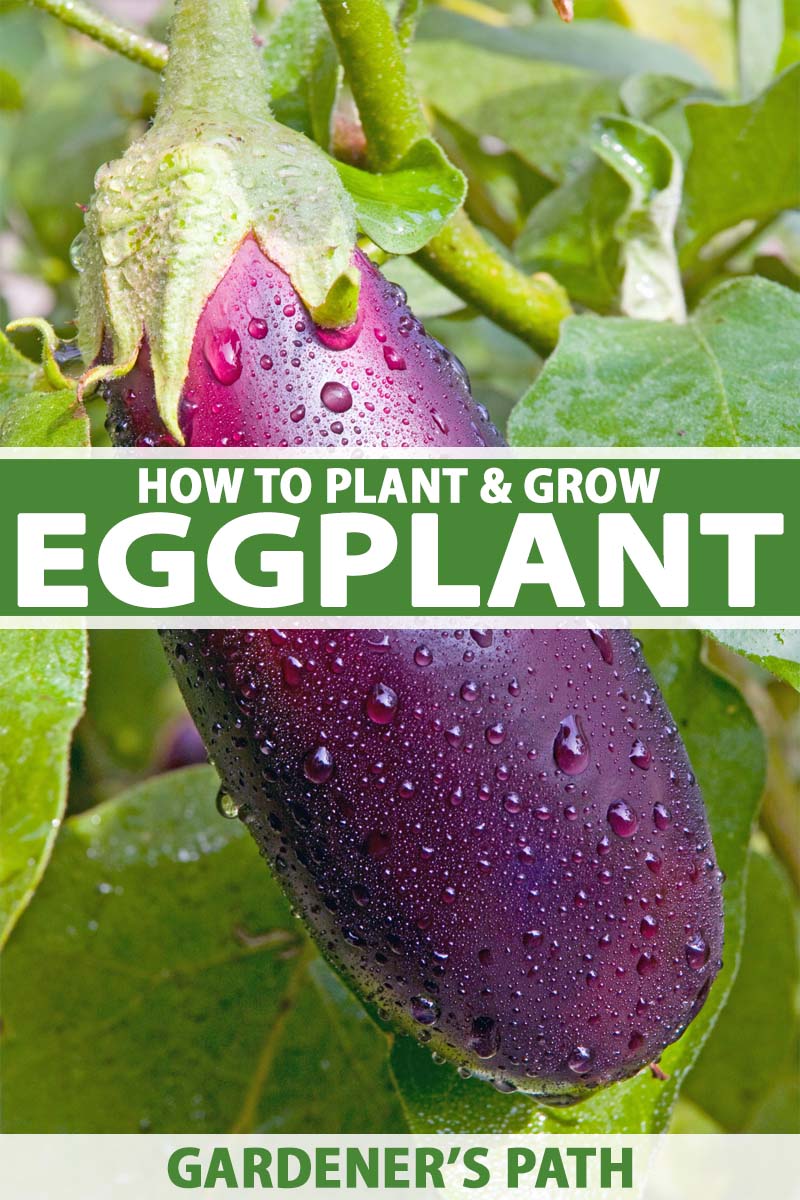
We link to vendors to help you find relevant products. If you buy from one of our links, we may earn a commission.
Crushed seeds from multiple species were once used to treat toothache.
And the fruit of the common eggplant we know today, S. melongena, is said to have a number of potential health benefits, like alleviating liver issues.
Given its rich history, it’s no surprise that this warm-season crop has become a mainstay in the kitchen.
Fried, sauteed, baked, breaded, stuffed, or roasted, this versatile edible can easily serve as the main dish or as a side.
With so many varieties to choose from and a number of ways to include them in your menus, eggplant makes a great addition to any summer vegetable garden.
Eggplants typically grow 18 to 36 inches tall with a spread of 24 to 36 inches. Each plant bears between two to 12 fruits, although this number varies based on the variety and growing conditions.
Keep reading to learn how to grow this summer-loving beauty for yourself.
What You’ll Learn
Cultivation and History
People have appreciated the versatile nature of eggplant for thousands of years.
In “History and Iconography of Eggplant,” an article written for Chronica Horticulturae, the journal of the International Society for Horticultural Science, Marie-Christine Daunay and Jules Janick explain that “Eggplant was domesticated from wild forms in the Indo-Burma region with indications that it was cultivated in antiquity.”
Daunay, a French scientist who specializes in vegetables in the Solanaceae family and eggplant in particular, and Janick, a professor of horticulture at Indiana’s Purdue University, also write that eggplant is probably native to a wide region encompassing India, Myanmar, Thailand, Laos, Vietnam, and China, and can be found growing wild in all these places.
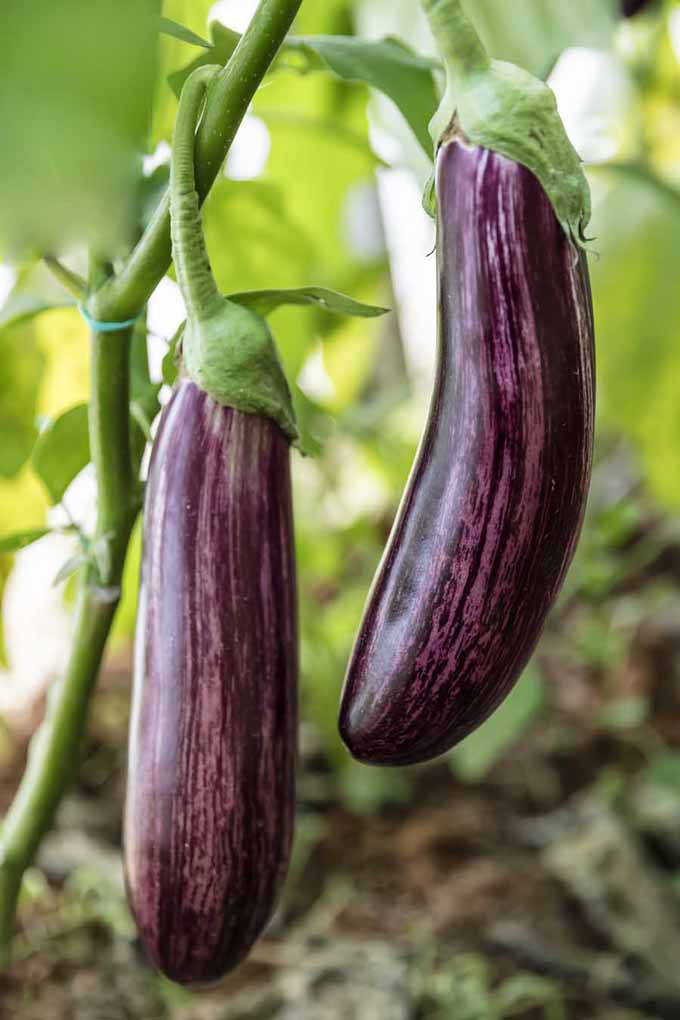
Over time, the fruit made its way to Europe, appearing in various writings and illustrations of the Medieval era and before. In his 1597 book, Gerard’s Herball, the English herbalist Thomas Gerard listed it as the “Madde Apple,” and wrote this in his description:
“Raging Apples hath a round stalke of two foot high, divided into sundry branches….the floures [are] of a white colour, and sometimes changing into purple, made of six parts wide open like a star… which being past, the fruit comes in place, set in a cornered cup or huske after the manner of great Nightshade, great and somewhat long, of the bignesse of a Swans egge.”
You can see where the plant got its name! The reference to the “great Nightshade” is telling, because some people believed that eggplant was poisonous like Atropa belladonna, or “deadly nightshade,” another member of the same plant family.
This is perhaps why Gerard called eggplant the “Madde Apple,” and why he writes, “doubtlesse these Apples have a mischievous qualitie, the use whereof is utterly to bee forsaken.”
This, despite acknowledging that “The people of Toledo eat them with great devotion.”
He finishes his treatise on eggplants with this word of advice: “It is therefore better to esteem this plant and have it in the garden for your pleasure and the rarenesse thereof, than for any vertue or good qualities yet knowne.”
Thankfully the people of Toledo were right about eggplant, yes? Who else feels bad that Gerard missed out on this delectable treat?
While the fruit of this plant takes many different forms, each cultivar or hybrid comes from the same species, S. melongena.
Propagation
You can start S. melongena from seed or nursery starts. Seed to harvest usually takes between 100 and 120 days, so timing is key.
From Seed
If you’re going to grow your own from seed, you’ll need to start them indoors eight to 10 weeks before the average last frost date in spring for your area.
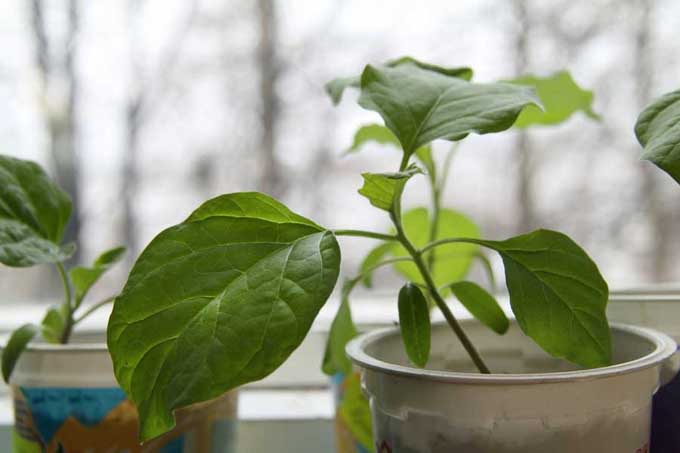
Sow seeds in moistened seed starting mix, just quarter of an inch deep, and keep soil evenly moist but not waterlogged.
Germination can take a while to occur if the soil temperature is below 80°F, so you may wish to invest in a heating mat.
It will also help to cover seed trays or containers with plastic wrap to retain heat and moisture.
If the soil is warm enough, germination should occur within 10 days. Seeds will germinate as long as the soil is at least 60°F, but you may be waiting up to 21 days.
Once seedlings have emerged, place the tray in the sunniest spot possible or under a grow light. When plants have a couple of true leaves you can repot them into a larger container filled with potting mix. When all danger of frost has passed, and seedlings are at least four inches tall, you can transplant them into the garden, after you have hardened them off.
Hardening off is the process of acclimating young plants to outdoor conditions. Start by placing your pots in a sheltered location in the garden for one hour per day, gradually increasing the time spent outdoors over the course of a week or 10 days.
Transplanting
Nursery starts or seedlings can be transplanted to the garden when all risk of frost has passed and the soil has warmed to at least 60°F. To be on the safe side, wait two to three weeks after your last frost date before setting plants into the garden.
Prepare your planting area by working the soil six to 12 inches deep and mixing in a couple handfuls of compost and some landscape sand if you need to improve drainage.
Plant seedlings or starts at the same depth as the container they were growing in and water in well.
Space plants 18-30 inches apart, depending on the variety. You can check your seed packet or nursery tag for mature dimensions.
How to Grow
S. melongena thrives in full sun, with a minimum of six hours of sunlight per day, and fertile, well draining soil with a pH between 5.5-7.2.
As members of the Solanaceae family, along with peppers and tomatoes, it’s no surprise that eggplants prefer hot weather. But, they like it even hotter than their popular cousins.
Anything below 50°F and plants will noticeably suffer, and a bout of frost will take them out altogether.
For this reason, you’ll want to wait until air temperatures are consistently warm, at least 65°F, to move seedlings or nursery starts outdoors.
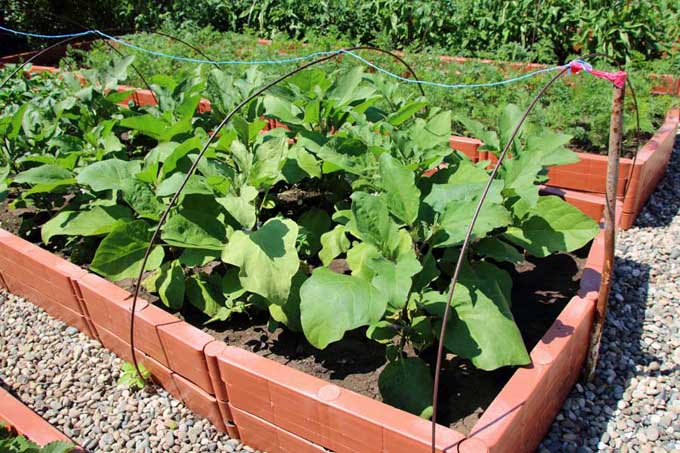
Raised beds are a great option because the soil warms up faster. At the beginning of the season, you can also lay black plastic over the soil to get the temperature up.
The sweet spot for fruit production is between 70 and 85°F. If you live in an area where cooler summers are common, try using a row cover or hoop house to trap heat.

Even though eggplant is known to thrive in hot weather, if temperatures are consistently above 95°F, plants will stop setting fruit.
Fertilizing and Compost
The best way to ensure fertile soil is to send a sample to the pros for a fertility analysis and to check the pH level.
If you forego a soil test, keep an eye on your plants. If they are thriving, great! If they aren’t, and it’s hot and sunny just how they like it, it may be the soil.
For the long term, encourage healthy soil by rotating crops, using cover crops, and adding several inches of fresh organic compost a couple times each year.
In the short term, consider applying three pounds of 5-10-10 fertilizer to every 100 square feet of planted area, or according to package instructions.
While eggplants are moderately heavy feeders, don’t overdo it on the nitrogen or they’ll produce an abundance of foliage at the expense of flowers and fruit.

If lush green leaves are out of control but there are very few flowers, too much nitrogen may be the issue.
Irrigation
Be mindful to water sufficiently, especially when fruits are developing. These plants require one inch of water per week, which may increase to two inches per week during hot, dry summers. Use a rain gauge to measure your rainfall, and provide supplemental irrigation accordingly.
When watering, the soil should be be moistened down to about six inches in depth without being soggy and waterlogged.
If your plants show signs of wilt or leaf curl, they may need more water.
You should try to water your plants in the early morning hours if possible. Early morning allows the bulk of the water to soak in and any excess water to evaporate as the sun rises. If you are using a soaker hose, and not allowing the foliage to become wet, you can water in the evenings instead.
Either way, you do not want the leaves of your plants to remain wet for long periods; this invites the spread of fungal diseases.
Mulching
Using organic mulch will help to maintain moisture levels by slowing evaporation and will allow you to increase the time between irrigation during dry spells.
Straw, pine needles, grass clippings, and bark can all be used as mulch. Keep any mulch away from plant stems as it invites animals such as mice and voles to attack your plants. It can also facilitate the spread of fungal and viral disease.
Staking
Fruits are heavy, so stake plants from the beginning in the same way you would stake a tomato. Make sure you do this at planting time to avoid damaging the roots later on. You can also use supporting techniques such as the Florida weave.
This will keep leaves off the ground, which will help to reduce chances for disease and prevent fruits from becoming deformed.
Pollination Considerations
Eggplants, much like tomatoes and peppers, have flowers with both male and female parts and are considered self-pollinating. However, wind and pollinators can only help.
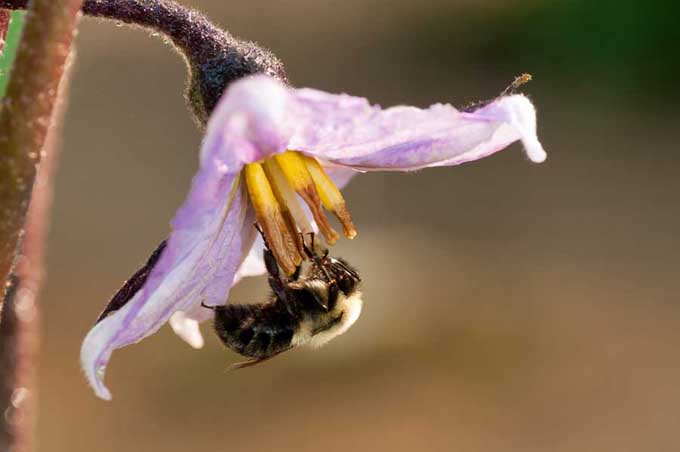
So, while hoop houses and row covers are great tools, you may have a smaller harvest if you keep crops enclosed throughout the entire growing season.
With that said, give plants a little shake here and there to further improve chances for pollination or use our tips on hand-pollination.
Container Growing
Eggplants grow well in containers, too. Use a five-gallon container for each plant and fill with moistened potting mix.
You’ll want to use a slow-release, balanced fertilizer at the time of planting and supplement throughout the season.
Granular fertilizer is a good option for container plantings since, in my experience, compost typically results in waterlogged soil over time.
Also keep in mind that soil in containers dries out faster than in the garden, so you will need to water more frequently.
Plants typically grow to be at least 18 inches both wide and tall, so space appropriately to allow for airflow.
Learn more about how to grow eggplants in containers in our guide.
Growing Tips
- Plant in a full sun location.
- Apply slow release fertilizer or compost during flowering to help increase fruit production.
- If needed, cover with floating row covers to prevent infestation by flea beetles and other pests.
- Use low poly tunnels or cold frames when planting during periods of potentially chilly weather.
- If environmental conditions are not right and plants are stressed, you might experience blossom drop.
Cultivars to Select
White, yellow, green, and varying shades of purple fruit come in a multitude of shapes and sizes, and are enjoyed all over the world.
Black Beauty
A good place to start might be the classic ‘Black Beauty,’ a six-inch, dark purple type that is well suited to home gardens.
This is the classic western eggplant heirloom variety that has been the standard for over a century. This cultivar generally yields four to six fruits per plant.
Seeds in packets of various sizes are available from Eden Brothers.
Millionaire Purple
If long and skinny is more your style, you might like the ‘Millionaire Purple’ hybrid cultivar.
‘Millionaire Purple‘ Hybrid Seeds
These plants bear long, slender eight-inch fruits, with light to dark purple skin and the flesh is nearly seedless. ‘Millionaire Purple’ can go from seed to maturity in just 55 days.
You can purchase various sizes of seed packets at True Leaf Market.
Gretel
This petite 2005 All-American Selection winner produces white, three- to four-inch fruits that are sweet and tender-skinned.
This hybrid variety produces fruit that has no bitterness and few seeds. This cultivar only grows to two and a half feet tall and wide making it perfect for container gardening.
You can purchase various sizes of seed packets at True Leaf Market.
If you’d like to grow several types of eggplant, this combo pack from Burpee contains four varieties.
You’ll get approximately 12 seeds for each of these varieties: ‘Black Beauty,’ ‘Snowy,’ ‘Purple Blush,’ and ‘Rosa Bianca.’
Buy this selection at Burpee Seeds.
Managing Pests and Disease
I’m always amazed at how pests can sniff out their targets.
Flea beetles especially have a real talent for finding any and every eggplant ever grown.
Okay – so that might be a little dramatic. But seriously, tiny holes punctured in the leaves let you know they’ve found your stash. But with some perseverance, they can be controlled with organic methods or dealt with by chemical pesticide.
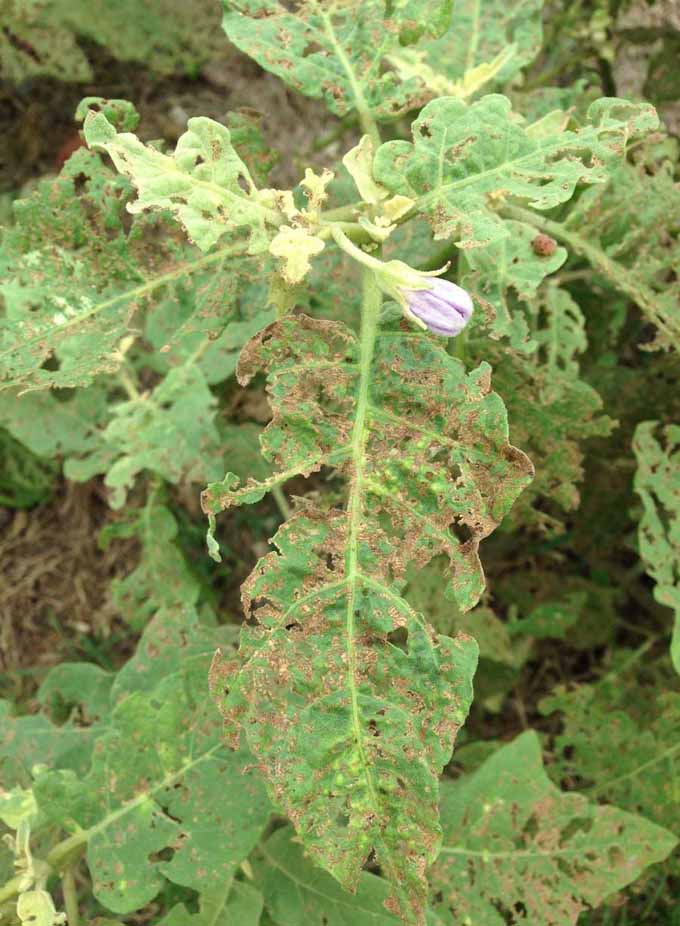
Although many types of flea beetles can munch on your crops, the eggplant flea beetle (Epitrix fuscula) is a particularly voracious eater of S. melongena as well as potatoes.
Learn more about combating flea beetles with our guide.
Other pests that like to make a meal out of eggplant include cutworms and spider mites.
Cutworms, which are moth larvae, do their damage at night, which is pretty obvious come morning.
Spider mites can barely even be seen and hide on the undersides of leaves. If you turn over a leaf and see a white web-like residue, it’s likely spider mites.
Fortunately, healthy plants can handle a few unwanted critters. Grow them under row covers until they’re large enough to withstand damage.
If action must be taken, consider using diatomaceous earth or insecticidal soaps.
As for diseases, prevention is key.
Powdery mildew and verticillium wilt have been known to affect eggplant and are difficult to control once present.
Verticillium wilt in particular is caused by soil-borne fungi that can survive for more than ten years, even without a host present.
Once infected, remove plants immediately. Avoid growing host plants, which include other members of the nightshade family like tomatoes and peppers, in the impacted area for at least three years.
Rotating crops year to year, removing diseased vegetation, watering smart, and growing resistant varieties if available will all help to prevent issues with pests and disease.
Harvesting and Preserving
The timing of your harvest will depend on the particular variety of eggplant you are growing. Typically, fruits are at their most tasty when harvested before they reach maturity.
When they are ready, the skin will have a glossy appearance, the flesh will be cream colored, and the seeds will be very small or not developed.
Harvesting when they are about half the expected mature size described on the seed packet will also encourage the plant to put its energy into producing more fruit.
If you wait too long to harvest, the skin may become dull and tough, and there may be an abundance of seeds.
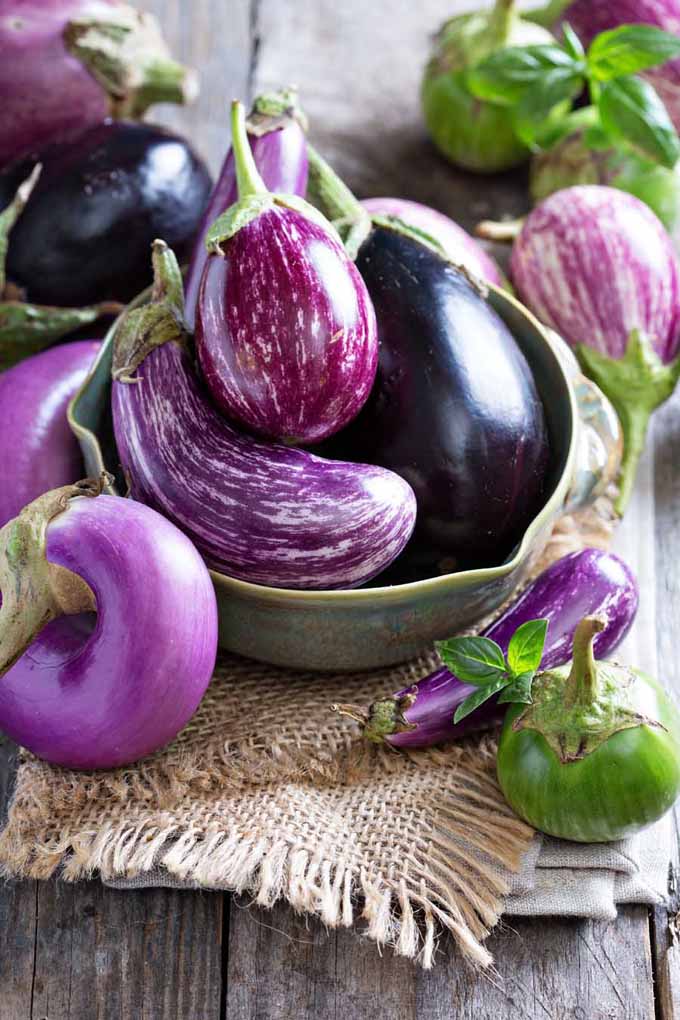
The plants often have thorns on or around the stems and calyx, so it is advisable to wear a pair of gardening gloves as you are picking. Use a clean pair of scissors or a sharp knife to cut through the stem one or two inches above the fruit.
Bring your eggplant inside and – without washing it first – wrap it in a paper bag and place it in a dry, temperature-controlled area of your home. Think a wine cooler, or anywhere that stays between 45 and 55°F.
Your harvest will stay fresh for up to one week – as long as you keep it away from tomatoes, bananas, melons, and other fruits that give off ethylene gas, also called the “fruit-ripening gas,” which can cause your eggplant to turn brown.
If you don’t have a wine cooler or a temperature-controlled area, the refrigerator is your next best bet. Wrap the fruit in paper towels and place it in the crisper drawer of your fridge, where it should last for about five to seven days.
You can also chop up the fruit into your desired size, peel it if desired, and blanch it by boiling for four minutes. Let the eggplant cool in an ice bath for 10 to 15 minutes before storing in a freezer-safe zip-top bag.
While your frozen fruit won’t have fresh eggplant’s lovely texture, you can still use it in pasta sauce, curries, and more. Just maybe not eggplant parmesan.
Recipes and Cooking Ideas
Eggplant, like mushrooms, takes on the flavors of the other ingredients that it is prepared with. It’s great for bulking up a recipe with more nutrition and less carbs.
It works great as a replacement for starchy vegetables and is the perfect veggie to add volume to stir-fries, soups, and stews. It can even be sliced thin and wide and substitute for lasagna noodles or spiralized for a linguine effect.
Younger fruits don’t need to be peeled, but if you let yours go past prime, the skin can become tough and bitter, so peeling is the better option.
Spicy Eggplant Curry
This spicy vegetarian curry is made with tender chunks of eggplant and chickpeas and flavored with fresh chili and other spices.

The creamy coconut milk base transforms it from the mundane into something very, very wonderful. Serve it over brown rice or riced cauliflower for a tasty and hearty meal.
Find the recipe on our sister site, Foodal.
Baba Ghanoush Hummus
Are you looking for a healthy dip to serve at your next gathering? Get ready to dunk all of those chips, pita pieces, and celery or carrot sticks into something a little different with a whole lot of tasty.
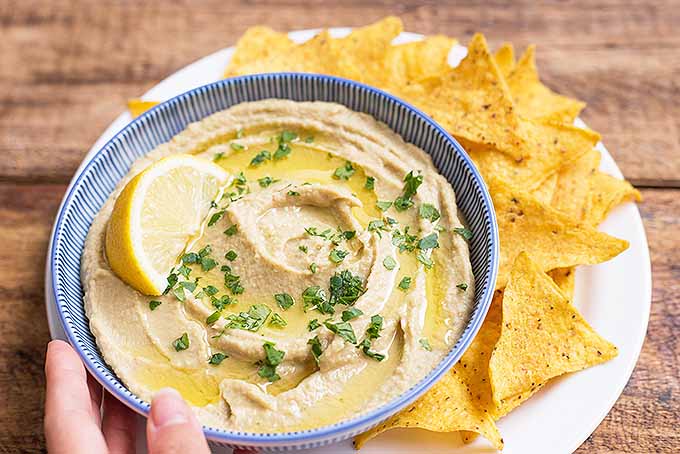
Try this healthy hummus inspired by baba ghanoush! The classic flavors of hummus are combined with perfectly roasted eggplant and garlic.
Eggplant, Kale & Ricotta Cannelloni
Do you need something lighter and healthier than traditional Italian pasta but just as tasty?
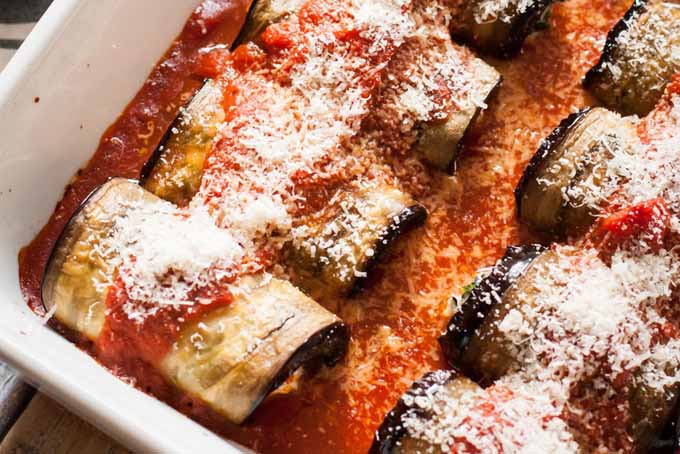
This vegetarian eggplant, kale, and ricotta cannelloni fits the bill for a carb-light and easy-to-make comfort food replacement.
Find the recipe now on Foodal.
Want additional eggplant recipes? Foodal has more!
Quick Reference Growing Guide
| Plant Type: | Tropical perennial, grown as an annual | Water Needs: | Moderate |
| Native to: | India | Maintenance: | Moderate |
| Hardiness (USDA Zone): | 4-10 | Soil Type: | Sandy loam or loam |
| Season: | Summer | Soil pH: | 5.5-7.2 |
| Exposure: | Full sun | Soil Drainage: | Well-draining |
| Time to Maturity: | 100 to 150 days from seed, 75 to 85 days from transplants | Companion Planting: | Chamomile, dill, mint, rosemary, sage, and alliums such leeks, onions, chives, and shallots |
| Spacing: | 18-30 inches | Avoid Planting With: | Other nightshades |
| Planting Depth: | 1/4 inch (seeds), same depth as container (transplants) | Family: | Solanaceae |
| Height: | 24-48 inches depending on cultivar | Genus: | Solanum |
| Spread: | 16-36 inches depending on cultivar | Species: | melongena |
| Common Pests: | Flea beetles, lace bugs, spider mites | Common Diseases: | Powdery mildew, verticillium wilt |
Worth the Effort
Although time consuming to start from seed, it’s beyond worth it when you harvest your homegrown crop.
Eggplants come in so many varieties, and if you start them from seed you can try any type you want.
Once in the ground, they tend to get along pretty well provided you keep them well watered.
A hot, sunny spot with well draining soil is of course ideal, but you’ll likely have some success even if conditions are less than perfect.
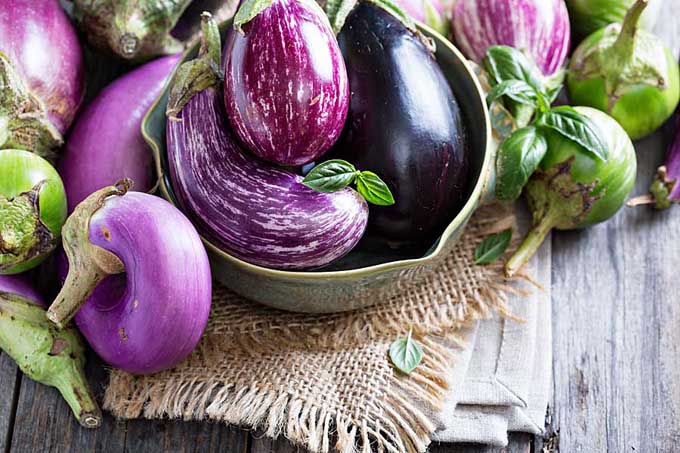
And the satisfaction of including homegrown eggplant at dinner will keep you perusing the seed catalogs year after year.
Have you grown eggplant before? What’s your secret to success? Let us know in the comments section below.
And for more information, be sure to take a look at some of our other eggplant guides next:


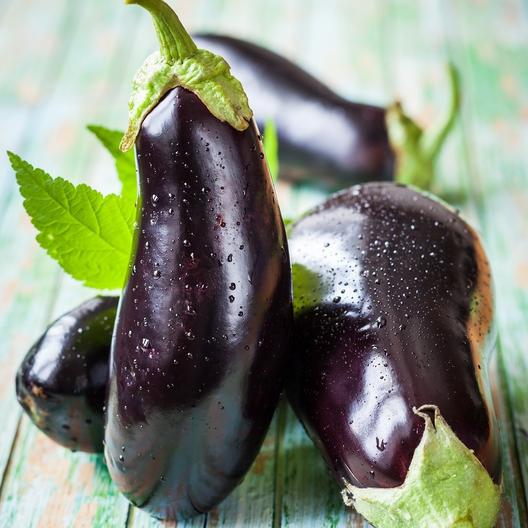
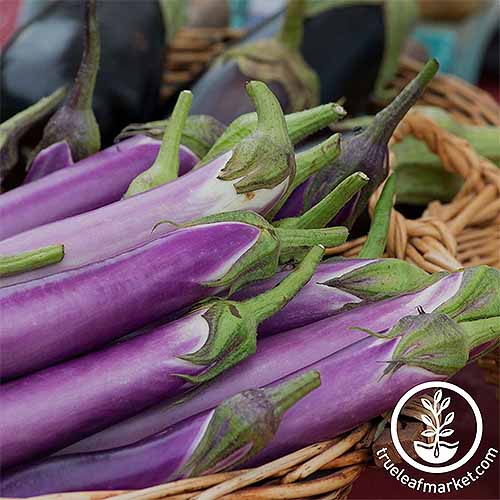
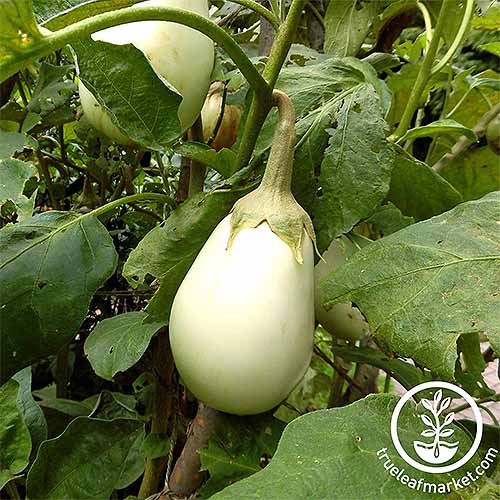
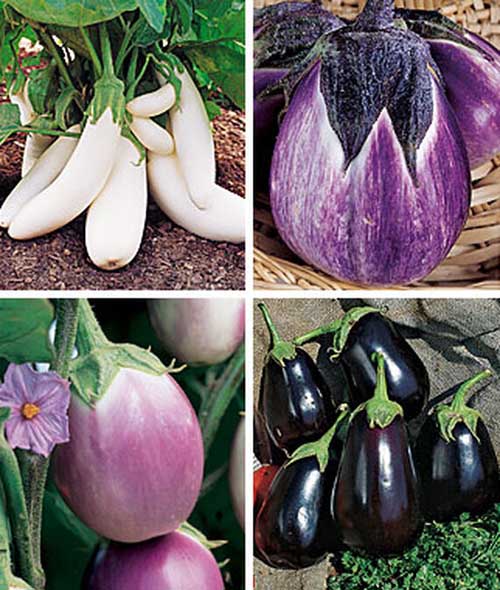
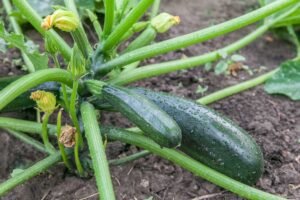

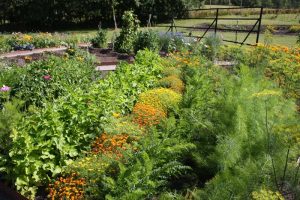
Are plants uprooted every year? Or are they annuals and can be pruned? I successfully planted a few eggplants and was able to enjoy their fruits. Not sure when it’s over and had to dispose or prune and plant again next year. Thanks.
I WOULD ALSO LIKE TO KNOW IF I SHOULD LEAVE THE PLANT IN THE GROUND AFTER HARVESTING AND HOPE FOR A NEW CROP NEXT YEAR OR..???
See my response above, Peter. This depends in large part on where you’re gardening! If the climate is suitably warm (Zone 10-11), eggplant may be grown as a perennial. Otherwise, you may be able to take cuttings to root indoors before composting the parent plant at the end of the season.
Most gardeners grow eggplant as an annual, but they are actually perennials. The ability to do this successfully depends on where you’re gardening, and whether you’re growing in containers or in the ground. Eggplant will grow as a perennial in Zones 10-11, and I’ve personally had success in cooler zones bringing plants indoors for the winter to return outdoors when temperatures warm. An added plus of growing eggplant as a perennial is that you’ll often be able to get flowers and a harvest to follow much sooner than you may if you start new plants from seed or transplant new… Read more »
Hi , my eggplant leaves are turning yellow(again) I have them in large pots.